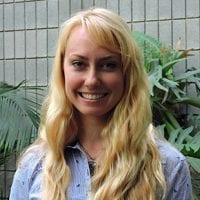
Localization of ART1 Protein using Multi-Color Subcellular Localizing Proteins
Project Summary
Aluminum stress is problematic in acidic soils, which cover up to 50% of the world’s arable land. Sixty percent of acidic soil is in developing countries, increasing their food security burden. Aluminum stress inhibits root growth by limiting nutrient and water uptake, which decreases crop yields. Combined with drought, this is devastating to crops. Oryza sativa is a good model for discovering Al tolerant genes; it is one of the most Al-tolerant cereals, has a small diploid genome, and has many genetic resources. In comparison to wild-type plants, a previously identified Al-sensitive mutant called art1 has significantly inhibited root growth when exposed to Al. The causative mutation in the art1 mutant was shown to be a 1 base pair deletion in the coding region of a C2H2 zinc-finger transcription factor. Based on previous in-silico predictions, the mutation was reported to disrupt nuclear localization of the ART1 protein resulting in a loss-of-function. Our recent in-silico work suggests that the mutant art1 protein retains a functional nuclear localization signal and likely localizes to the nucleus; however, no direct evidence is currently available. The goal of my project is to experimentally determine the subcellular localization of both the wild-type and mutant ART1 proteins. To answer this question, I also helped in the development of a set of fluorescent subcellular markers that combine multi-site Gateway and USER Fusion cloning systems to simplify infiltration. This will be a valuable tool for plant infiltration and to help unravel Al-tolerance in rice with the art1 mutant.
My Experience
Working in the McCouch lab this summer gave me wonderful insight into the world of research. At the Boyce Thompson Institute and Cornell, I had the opportunity to work with world renowned scientists and interact with them as real people with aspirations to improve the world. Everyone in the lab was always welcoming and very helpful with teaching me new techniques and helping me to discern a future career.
This summer I learned a great deal about molecular biology and laboratory collaboration. I was fortunate to work in a lab with people of diverse plant science backgrounds. Due to this diversity, almost any problem or paper was approached in a well-rounded, systems like manner. I was actively encouraged to participate in lab meetings and problem solving, which helped me to feel like a useful part o
